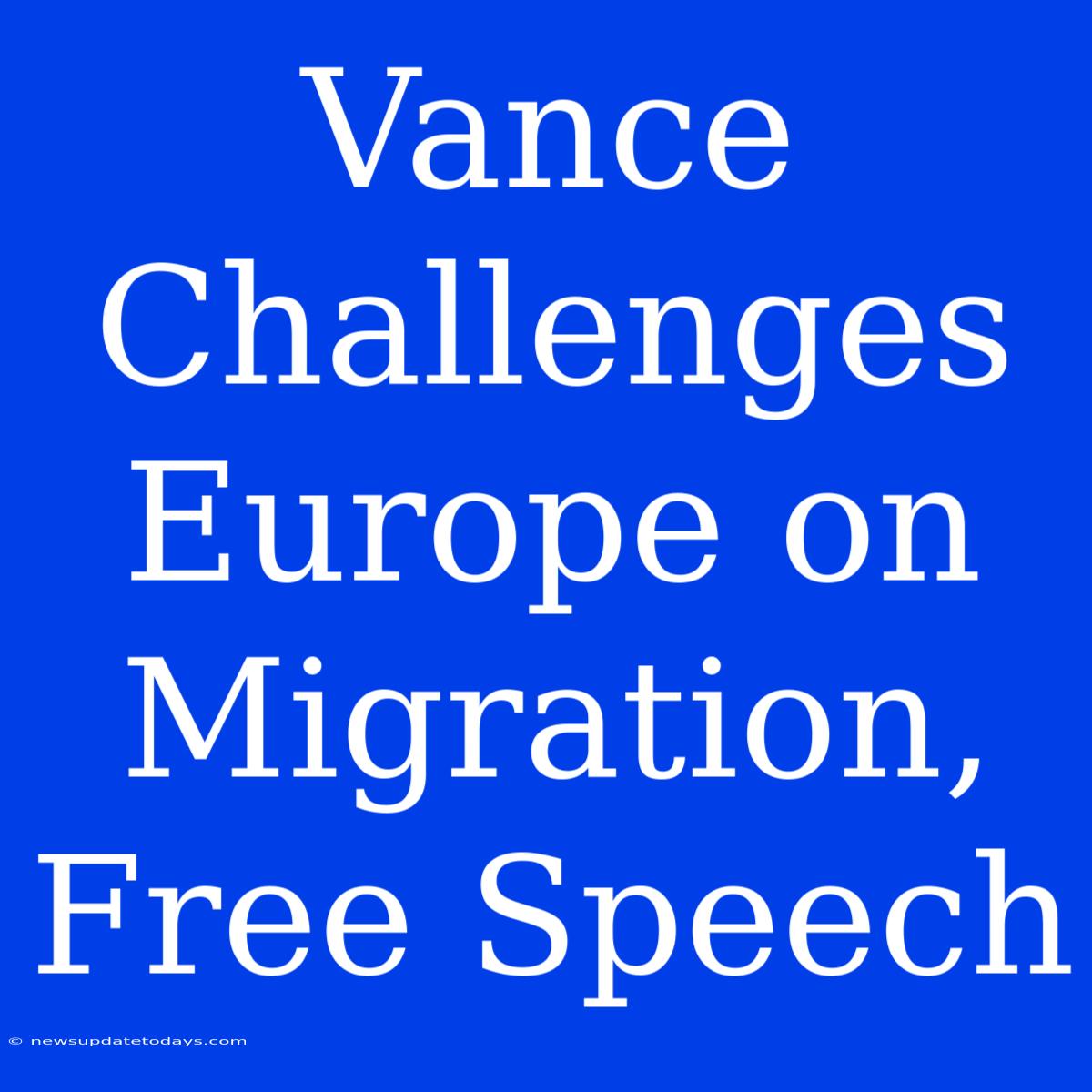Vance Challenges Europe on Migration, Free Speech: A Clash of Values?
Europe faces a critical juncture, grappling with the intertwined challenges of mass migration and the erosion of free speech. Recent statements by J.D. Vance, a prominent US Senator, have ignited debate, highlighting stark differences in approach between the US and Europe on these pressing issues. This article explores Vance's criticisms and the underlying complexities of the European response.
Migration: A Humanitarian Crisis or a Security Threat?
Vance's stance on migration often emphasizes security concerns. He has voiced anxieties about the potential strain on social services and the integration challenges posed by large-scale immigration. This perspective, while not uncommon in certain circles, clashes with the more humanitarian-focused approach adopted by many European nations.
Europe, having experienced significant waves of migration in recent years, has wrestled with providing asylum and support to refugees while simultaneously attempting to manage national borders and integrate newcomers into society. This delicate balancing act often results in criticism from both the left and the right. Some argue that Europe's open-door policy is unsustainable, while others decry the perceived harshness of border controls and asylum procedures.
The key difference: Vance’s approach seems to prioritize national security and potential societal impact above humanitarian considerations, whereas Europe, while facing similar pressures, attempts to reconcile both aspects through varying degrees of success. The debate boils down to different prioritizations of values.
Free Speech: Balancing Rights with Responsibilities?
Vance's concerns extend to the perceived shrinking space for free speech in Europe. He points to instances of censorship and restrictions on expression, particularly regarding controversial topics like immigration and Islam. This aligns with a broader global concern about the tension between freedom of expression and the potential for hate speech and incitement to violence.
Europe's approach to free speech is nuanced and often codified in law, often balancing the fundamental right to freedom of expression with the need to protect vulnerable groups from discrimination and harassment. This contrasts with the often more absolutist approach found in certain US contexts.
The delicate balance: Europe’s legal frameworks attempt to define the boundaries of acceptable speech, a process constantly evolving and sparking ongoing debate. Finding this balance between protecting fundamental rights and preventing harm is a challenge faced globally, but the European approach, with its emphasis on legal frameworks, differs significantly from the often more informal and context-dependent approach in the US.
Conclusion: A Transatlantic Dialogue?
Vance's challenges to Europe highlight a fundamental divergence in approaches to managing migration and upholding free speech. While both continents grapple with similar challenges, the emphasis on prioritizing security versus humanitarian concerns, and the differing legal frameworks surrounding free speech, expose a significant transatlantic divide.
Instead of outright condemnation, a more constructive approach might involve fostering dialogue and exploring the strengths and weaknesses of each approach. This could lead to a more nuanced understanding of these complex issues and potentially inform more effective policies on both sides of the Atlantic. The ongoing debate demands a thoughtful consideration of the values at stake and the need for finding common ground in addressing global challenges.

